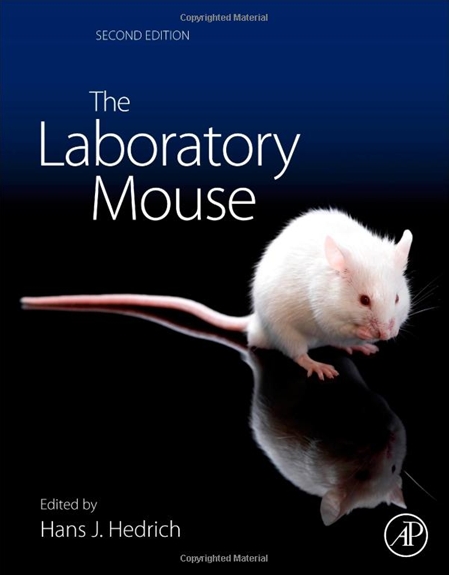Key Features
뷚eatures four-color illustrations with complete instruction on mouse surgery, anatomy, behavior and care of the mouse
in laboratory research
뷤ffers additional chapters on new mouse strains, phenotyping of strains, bacteria and parasites, and immunology
뷞ncludes the newly revised EU standards on care, as well as, comparisons to standards and regulations in the US and
other countries
Description
The Laboratory Mouse, Second Edition is a comprehensive book written by international experts. With inclusions of the
newly revised European standards on laboratory animals, this will be the most current, global authority on the care of
mice in laboratory research. This well-illustrated edition offers new and updated chapters including immunology,
viruses and parasites, behavior, enrichment and care standards of laboratory mice across the life sciences, medical and
veterinary fields.
Readership
The primary audience for this work is biomedical researchers, laboratory animal veterinarians, and other professionals
engaged in laboratory animal sciences, as well as, academic and research libraries.
Table of Contents
The Laboratory Mouse, 2nd Edition
Part 1 History and Genetics
1.1 Origin and Phylogenetic Relationship of the Laboratory Mouse
1.2 Historical Foundations
1.3 Strains, Stocks and Mutant Mice
1.4 Mouse Genomics
1.5 Generation of Mouse Mutants by Genotype-driven Mutagenesis
Part 2 Anatomy and Normative Biology
2.1 Early Mouse Development
2.2 Gross Anatomy
2.3 Histology
2.4 Skin and Adnexa of the Laboratory Mouse
2.5 Development and Disease of Mouse Muscular and Skeletal Systems
2.6 The Cardiovasular System
2.7 The Respiratory Tract
2.8 The Gastrointestinal System and Metabolism
2.9 Hematology
2.10 Studying Immunology in Mice
2.11Behaviour
2.12 Biological Rhythm of the Mouse
Part 3 Neoplasms and Infectious Diseases
3.1 Diversity of Spontaneous Neoplasms in commonly used Inbred Strains of Laboratory Mice
3.2 Viral Infections
3.3 Bacterial Infections of the Laboratory Mouse
3.4 Parasitic Infections of the Laboratory Mouse
Part 4 Husbandry and Maintenance
4.1 Housing and Maintenance
4.2 Mouse Enrichment
4.3 Nutrition of the Laboratory Mouse
4.4 Health Management and Monitoring
4.5 Genetic Monitoring
4.6 Gnotobiology and Breeding Techniques
4.7 Cryopreservation of Pre-implantation Embryos and Gametes and associated Methods
Part 5 Procedures
5.1 Handling and Restraint
5.2 Routes of Administration
5.3 Collection of Body Fluids
5.4 Anaesthesia, Analgesia and Euthanasia
5.5 Imaging the Laboratory Mouse in vivo
5.6 Necropsy Methods
Part 6 Legal Regulations
6.1 Laws, Guidelines and Policies governing the Use of Mice in Research


